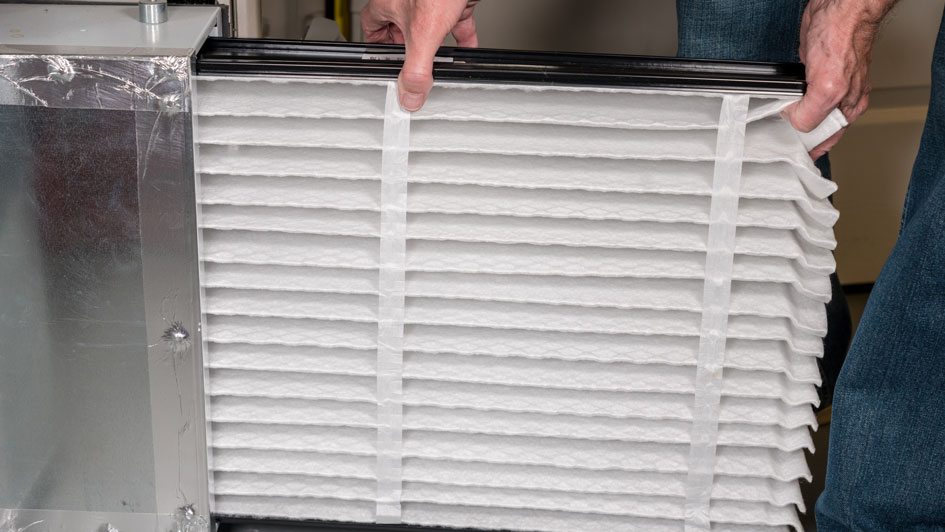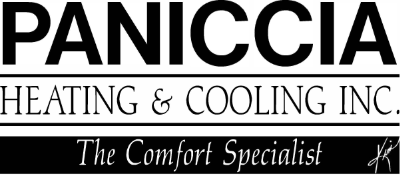
Selecting the ideal furnace filter and changing it when it gets dirty is as important to your HVAC system as changing the oil is to your car. Each plays a critical part in keeping its system running safely, efficiently and for a long time.
A clogged furnace filter loses its effectiveness, permitting potentially harmful particles to move through your home. It also limits airflow, which can damage your furnace and shorten its life span.
Making certain your furnace uses a clean filter that is appropriate for your needs is not just about keeping your furnace operating efficiently. It’s also about creating healthy indoor air quality for your residence.
Your health is important to the heating and cooling pros at Paniccia Heating & Cooling. We've long been dedicated to improving indoor air quality in Michigan City. Here, we’ve answered frequent questions about HVAC filters, including that very tricky question of what direction do you point a filter in your furnace or air conditioner?
How Often to Replace the Air Filter in a Furnace
Experts stress it's important to replace dirty air filters in a furnace or air conditioner routinely. Dirt-clogged filters cause the system to worker harder than it should because it takes more energy to force air through the plugged-up filter.
Officials suggest examining your furnace filter every 30 days and replacing it if it’s dirty. You’ll know if your filter needs changing because it will be gray or black from dirt or dust. Those who have pets will likely want to replace their furnace air filter more often, because a quality air filter will trap pet hair circulating in a home.
Where Is the Air Filter in My Furnace?
In general, a furnace air filter is usually installed in the return air duct or blower compartment before the return air reaches the furnace. This is so air flowing into the system is filtered before it passes through the furnace components and is heated.
Depending on the type of furnace, the filter may be located on the right, left, bottom or in some cases, inside the furnace. It's typically housed in a slot, frame or cabinet for convenient access and replacement. Always refer to your furnace's owner manual for important information regarding filter location of your furnace.
Is a Furnace Filter the Same as an Air Filter?
The simple answer is, yes. In HVAC, a furnace filter and an air filter or air conditioner filter are essentially the same thing. While people may call them different things based on the current season— warm or chilly months—they are all filters that clean the air in your residence.
They each eliminate dust, allergens, bacteria and other contaminants from the air that is drawn into the furnace and air conditioning system, making certain the air distributed throughout your home is clean and safe.
What Is a MERV Rating and What Rating Is Best for Me?
Once you track down your old furnace filter and determine when it should be substituted for a clean one, it’s time to select a replacement. That means determining the level of filtration that you need. One approach to this is by choosing an appropriate MERV rating for your needs.
MERV is an abbreviation for Minimum Efficiency Reporting Values. The MERV rating calculates the effectiveness of air filters at trapping airborne molecules. The rating scale ranges from 1 to 20, with bigger numbers indicating enhanced capabilities to filter smaller particles.
Experts say a filter with a MERV rating between 8 and 13 offers a good balance between having adequate indoor air quality without unnecessarily restricting airflow. However, people with some health conditions could need to purchase a filters with a higher MERV rating.
Which Way to Put the Air Filter in a Furnace or AC Unit
Putting an air filter in a furnace or air conditioner the proper way is important for the efficient operation of the unit. Air filters have a certain direction, indicated by an arrow printed on the side of the filter frame. The filter should be put in with this arrow pointing in the direction of the furnace or AC, which is the direction of the airflow. If you're doubtful about the airflow direction, remember that air always moves from the return duct to the heat or cooling source. Therefore, make certain the arrow points in the direction of the furnace or AC.
Many people are confused by which direction to install their system's air filter. To help remember, consider snapping a quick photo with your cell phone after the filter has been accurately installed by a professional. Or, you also could ask a technician to use a marker to write on the outside of your furnace which direction the filter should go. A handy time to inquire about this is during a scheduled furnace maintenance call.
Changing Your Furnace's Air Filter
Switching out the filter on your furnace or AC is a simple process. Here is a step-by-step rundown of how to retreive a dirty air filter and swap it for a new one:
- Turn off your furnace: Make a point to switch off your furnace before starting the process.
- Locate the furnace filter: Typically, the filter is located in the furnace or in the air return vent. Make note of which direction the arrow points on the filter, because you’ll want the arrow on the replacement filter to point similarly.
- Slide out the old filter: Be careful not to knock out any dust or particles.
- Note the date: Write down the date you replaced the filter on the new filter's frame. This will help your family keep track of when it's time for another replacement.
- Insert new filter: Put in the new filter with the arrow pointing toward the furnace, which is the direction of airflow and should be the same direction the arrow pointed on the dirty filter you just removed.
- Secure the filter: Make sure the new filter fits securely and close any latches or clips that lock it in the compartment.
- Turn on your furnace: Once the clean filter is safely in place, you can turn your furnace back on.
Can a Dirty Air Filter Cause a Furnace Not to Work?
The shortest answer is, yes, a dirty air filter can cause a furnace to quit working or reduce its lifespan. Changing your furnace or AC filter is one of the simplest things you can do to keep your system working correctly.
